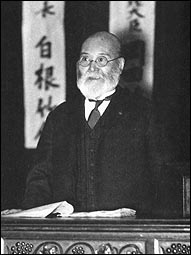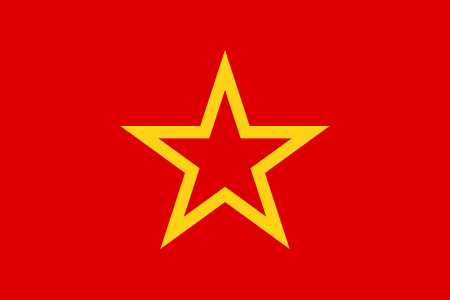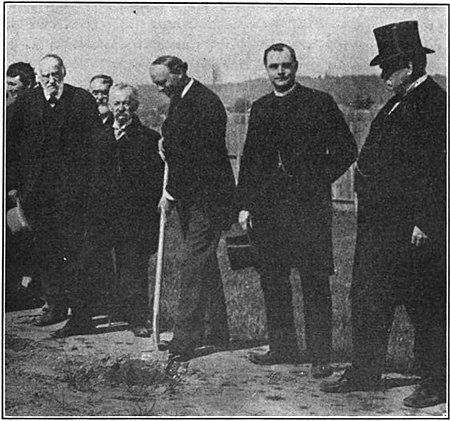Taíno language
| |||||||||||||||||||||||||||||||||||||||||||||||||||||||||||||||||||||||||||||||||||||||||||||||||||||||||
Read other articles:

Takahashi Korekiyo高橋 是清 Perdana Menteri JepangMasa jabatan15 Mei 1932 – 26 Mei 1932(Pejabat)Penguasa monarkiShōwaPendahuluInukai TsuyoshiPenggantiSaito MakotoMasa jabatan13 November 1921 – 12 Juni 1922Penguasa monarkiYoshihitoHirohito (Bupati)PendahuluUchida Kosai (Pejabat)PenggantiKato Tomosaburo Informasi pribadiLahir(1854-07-27)27 Juli 1854Edo, JepangMeninggal26 Februari 1936(1936-02-26) (umur 81)Tokyo, JepangMakamTaman Makam Tama Reien, Fuchū, TokyoPartai…

Election in Nevada Main article: 1960 United States presidential election 1960 United States presidential election in Nevada ← 1956 November 8, 1960[1] 1964 → All 3 Nevada votes to the Electoral College Nominee John F. Kennedy Richard Nixon Party Democratic Republican Home state Massachusetts California Running mate Lyndon B. Johnson Henry Cabot Lodge Jr. Electoral vote 3 0 Popular vote 54,880 52,387 Percentage 51.16% 48.84% County Results…

Cet article a pour objet de présenter une liste de ponts remarquables de Croatie, tant par leurs caractéristiques dimensionnelles, que par leur intérêt architectural ou historique. Les ponts de Krk La catégorie lien donne la classification de l'ouvrage parmi ceux présentés et propose un lien vers la fiche technique du pont sur le site Structurae, base de données et galerie internationale d'ouvrages d'art. La liste peut être triée selon les différentes entrées du tableau pour voir ain…

2014 concert film For the concert tour this film is based upon, see The Wall Live (2010–2013). Roger Waters: The WallFilm posterDirected by Roger Waters Sean Evans Written byRoger WatersProduced by Clare Spencer Roger Waters Starring Roger Waters G. E. Smith Dave Kilminster Snowy White Graham Broad Jon Carin Robbie Wyckoff CinematographyBrett TurnbullEdited byKatharine McQuerreyDistributed byPicturehouse Entertainment[1]Release dates 6 September 2014 (2014-09-06) (TI…

This article is about the tincture. For the animal, see Stoat. For other uses, see Ermine (disambiguation). Style of tincture in heraldry Some of the many variations of ermine spots found in heraldry over the centuries Ermine fur, from the robes of Peter I of Serbia Ermine (/ˈɜːrmɪn/) in heraldry is a fur, a type of tincture, consisting of a white background with a pattern of black shapes representing the winter coat of the stoat (a species of weasel with white fur and a black-tipped tail). …

2012 single by Carrie UnderwoodTwo Black CadillacsSingle by Carrie Underwoodfrom the album Blown Away ReleasedNovember 18, 2012 (2012-11-18)[1]Recorded2011GenreCountry popLength4:58 (album version) 4:01 (radio edit)LabelArista NashvilleSongwriter(s)Carrie Underwood, Hillary Lindsey, Josh KearProducer(s)Mark BrightCarrie Underwood singles chronology Blown Away (2012) Two Black Cadillacs (2012) See You Again (2013) Music videoTwo Black Cadillacs on YouTube Two Black Cadillac…

Questa voce sugli argomenti calciatori armeni e calciatori polacchi è solo un abbozzo. Contribuisci a migliorarla secondo le convenzioni di Wikipedia. Segui i suggerimenti dei progetti di riferimento 1, 2. Vahan Gevorgyan Nazionalità Armenia Polonia (dal 2004) Altezza 172 cm Peso 71 kg Calcio Ruolo Centrocampista Termine carriera 2015 CarrieraSquadre di club1 1999-2000 Petro Płock17 (3)2000-2002 Orlen Płock53 (7)2002-2007 Wisła Płock121 (14)2007→ Jagi…

سرقسطة (بالإسبانية: Zaragoza)[1] سرقسطة سرقسطة تقسيم إداري البلد إسبانيا [2][3] العاصمة سرقسطة [لغات أخرى] عاصمة لـ أَرَغـُونسرقسطة خصائص جغرافية إحداثيات 41°39′00″N 0°53′00″W / 41.65°N 0.88333333333333°W / 41.65; -0.88333333333333 [4] المساحة 97…

Soviet military commander (1896–1937) In this name that follows Eastern Slavic naming customs, the patronymic is Emmanuilovich and the family name is Yakir. Iona YakirBirth nameIona Emmanuilovich YakirBorn(1896-08-03)3 August 1896 Kishinev, Bessarabia, Imperial RussiaDied12 June 1937(1937-06-12) (aged 40) Moscow, Russian SFSR, Soviet UnionAllegiance Russian SFSR Soviet UnionService/branch Red ArmyYears of service1918–1937Rank Komandarm 1st rankUnit45th Rifle Division, 58th Rifl…

此条目序言章节没有充分总结全文内容要点。 (2019年3月21日)请考虑扩充序言,清晰概述条目所有重點。请在条目的讨论页讨论此问题。 哈萨克斯坦總統哈薩克總統旗現任Қасым-Жомарт Кемелұлы Тоқаев卡瑟姆若马尔特·托卡耶夫自2019年3月20日在任任期7年首任努尔苏丹·纳扎尔巴耶夫设立1990年4月24日(哈薩克蘇維埃社會主義共和國總統) 哈萨克斯坦 哈萨克斯坦政府與�…

此条目序言章节没有充分总结全文内容要点。 (2019年3月21日)请考虑扩充序言,清晰概述条目所有重點。请在条目的讨论页讨论此问题。 哈萨克斯坦總統哈薩克總統旗現任Қасым-Жомарт Кемелұлы Тоқаев卡瑟姆若马尔特·托卡耶夫自2019年3月20日在任任期7年首任努尔苏丹·纳扎尔巴耶夫设立1990年4月24日(哈薩克蘇維埃社會主義共和國總統) 哈萨克斯坦 哈萨克斯坦政府與�…

No AirSingel oleh Jordin Sparks dan Chris Browndari album Jordin SparksSisi-BSave MeDirilis4 Maret 2008 (2008-03-04)(see release history)FormatDownload, CD, maxi singleDirekam2007GenrePop, R&BDurasi4:24Label19 Records, Jive, ZombaPenciptaJames Fauntleroy II, Eric Blue Tooth Griggs, Michael Scala, Harvey Mason, Jr., Damon Thomas, Steve RussellProduserThe UnderdogsKronologi singel Tattoo(2007) No Air One Step at a Time (2008) Tattoo(2008) No Air(2008) Tattoo(2008)(Re-release) No Air(2008)…

كهف ميزمايسكايامعلومات عامةالمكان Apsheronsky District (en) الجبل جبال القوقاز البلد روسيا الإحداثيات 44°10′N 40°00′E / 44.17°N 40°E / 44.17; 40 المستوى 1٬310 متر تعديل - تعديل مصدري - تعديل ويكي بيانات كهف ميزمايسكايا (بالروسية: Мезмайская пещера) هو موقع كهف لعصر ما قبل التاريخ يطل ع�…

American judge For other people named George Williams, see George Williams (disambiguation). George Williams34th Mayor of PortlandIn officeJune 2, 1902 – June 2, 1905Preceded byHenry RoweSucceeded byHarry Lane32nd United States Attorney GeneralIn officeDecember 14, 1871 – April 25, 1875PresidentUlysses GrantPreceded byAmos AkermanSucceeded byEdwards PierrepontUnited States Senatorfrom OregonIn officeMarch 4, 1865 – March 3, 1871Preceded byBenjamin HardingSucceede…

Mountain and park in Georgia, United States This article is about the mountain in the U.S. state of Georgia. For the nearby city, see Stone Mountain, Georgia. For other uses, see Stone Mountain (disambiguation). Stone MountainThe mountain viewed from a distanceHighest pointElevation1,686 ft (514 m)Prominence825 ft (251 m)Coordinates33°48′21.40″N 84°8′43.52″W / 33.8059444°N 84.1454222°W / 33.8059444; -84.1454222GeographyStone MountainSt…

Pandemi koronavirus 2020 di Afrika SelatanPeta dengan jumlah kasus COVID-19 terkonfirmasi per provinsi pada 17 April 2020[update]. 10–99 100-999 1000+Peta dengan jumlah kematian COVID-19 terkonfirmasi per provinsi as of 17 April 2020[update]. 1-9 10+ Peta kasus terkonfirmasi di munisipalitas-munisipalitas Tanjung Barat Peta dengan jumlah kasus COVID-19 terkonfirmasi per munisipalitas di Tanjung Barat pada 17 April 2020…

Glabridin Names IUPAC name (3R)-6′′,6′′-Dimethyl-6′′H-pyrano[2′′,3′′:7,8]isoflavan-2′,4′-diol Systematic IUPAC name 4-[(3R)-8,8-Dimethyl-3,4-dihydro-2H,8H-(benzo[1,2-b:3,4-b′]dipyran)-3-yl]benzene-1,3-diol Identifiers CAS Number 59870-68-7 Y 3D model (JSmol) Interactive image ChEBI CHEBI:5369 N ChEMBL ChEMBL480477 Y ChemSpider 110560 Y ECHA InfoCard 100.126.141 PubChem CID 124052 UNII HOC5567T41 Y CompTox Dashboard (EPA) DTXSID00208589 InChI InC…

American record label Impulse! RecordsParent companyUniversal Music GroupFounded1960 (1960)FounderCreed TaylorDistributor(s)Verve RecordsGenreJazzCountry of originU.S.LocationNew York, New YorkOfficial websitewww.impulserecords.com Impulse! Records (occasionally styled as ¡mpulse! Records and ¡!) is an American jazz record label established by Creed Taylor in 1960. John Coltrane was among Impulse!'s earliest signings. Thanks to consistent sales and positive critiques of his recordings, th…

Small subterranean mammal This article is about the mammals called moles. For other uses, see Mole (disambiguation). Not to be confused with vole, a small mouse-like rodent. A European moleVarious moles Moles are small mammals adapted to a subterranean lifestyle. They have cylindrical bodies, velvety fur, very small, inconspicuous eyes and ears,[1] reduced hindlimbs, and short, powerful forelimbs with large paws adapted for digging. The word mole refers to any species in the family Talpi…

La cartina di Israele avvolta dai colori della bandiera arcobaleno. All'interno dello Stato d'Israele i diritti concessi alle persone lesbiche, gay, bisessuali e transgender (LGBT) sono i più ampi e sviluppati di tutta l'Asia[1]. Il diritto comune garantisce oramai alle coppie omosessuali la maggior parte dei diritti matrimoniali ufficialmente riconosciuti alle coppie eterosessuali, anche se la piena ufficialità del matrimonio omosessuale non è ancora stata sancita. Tuttavia, vengono …

